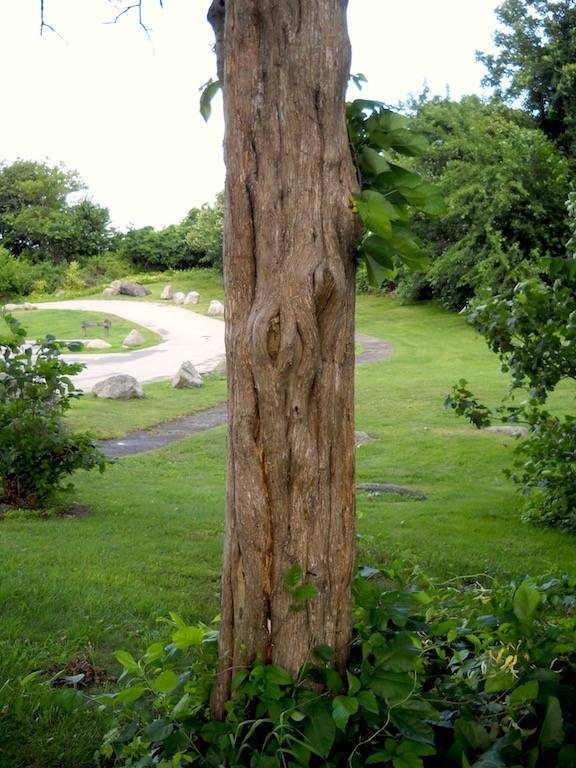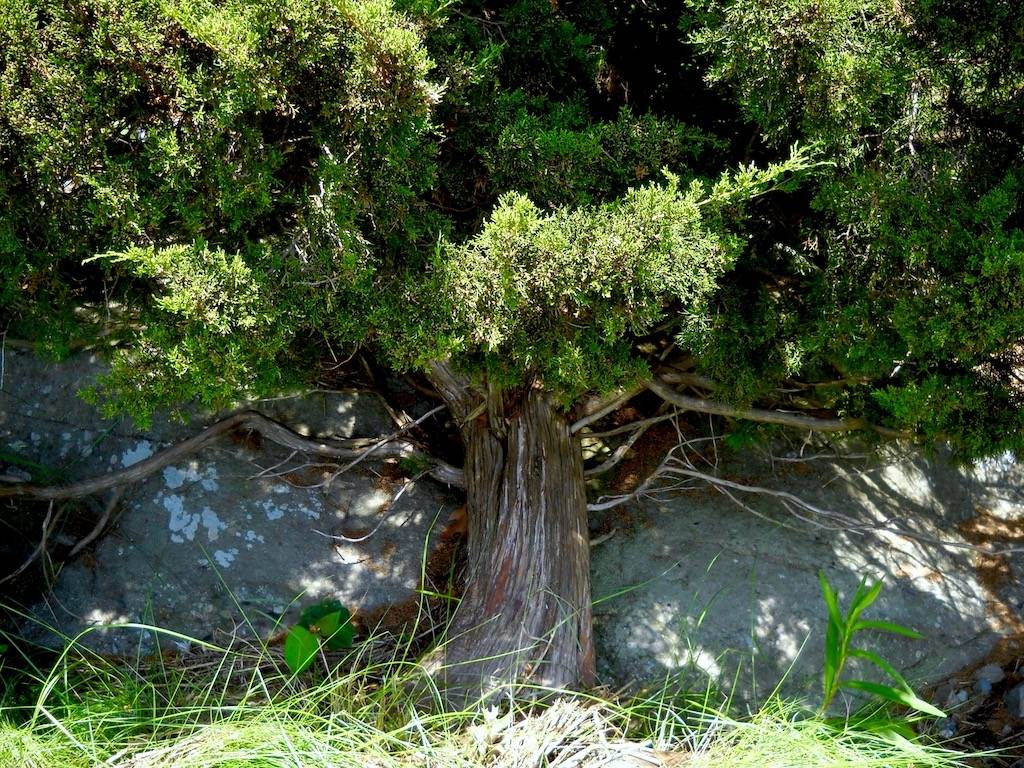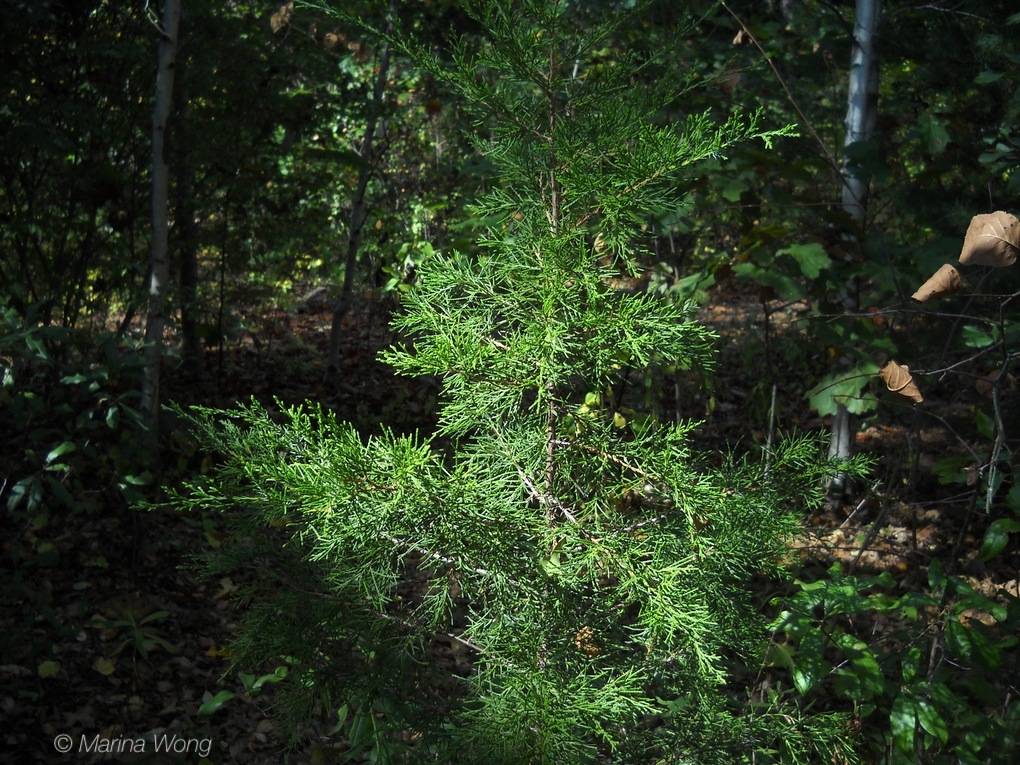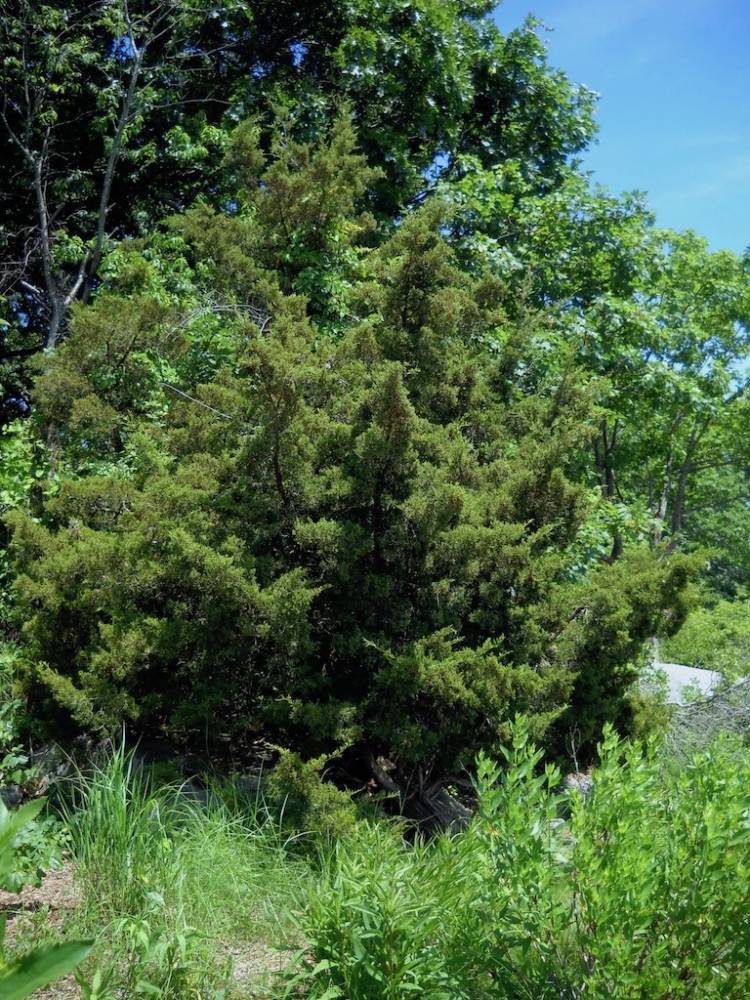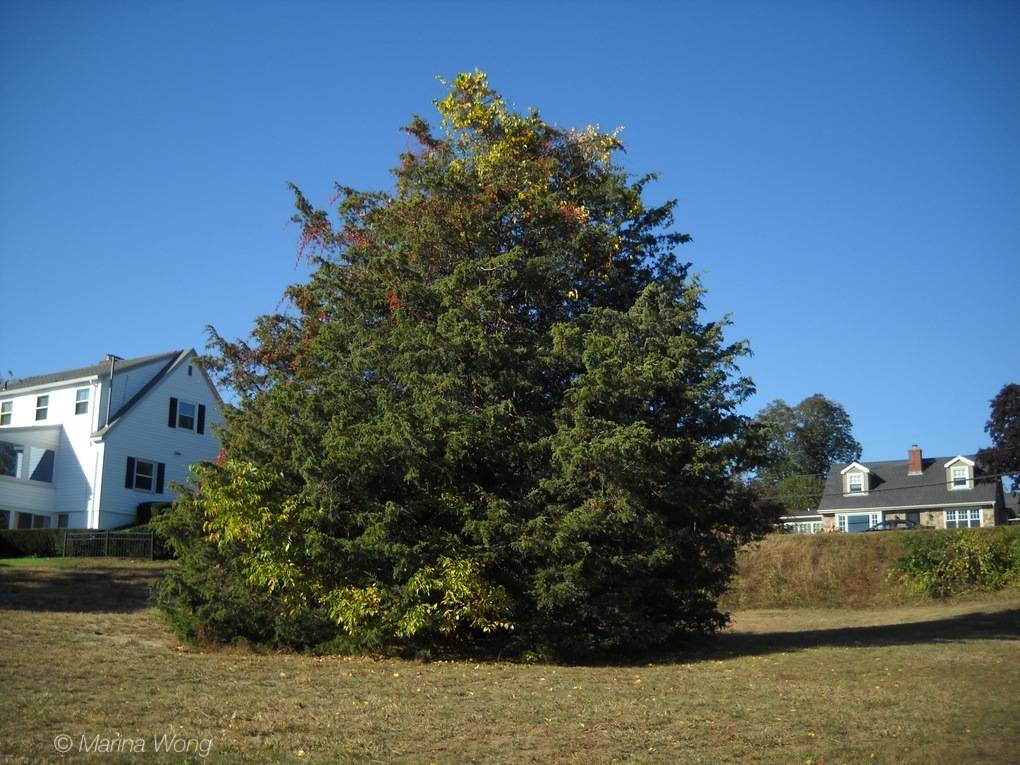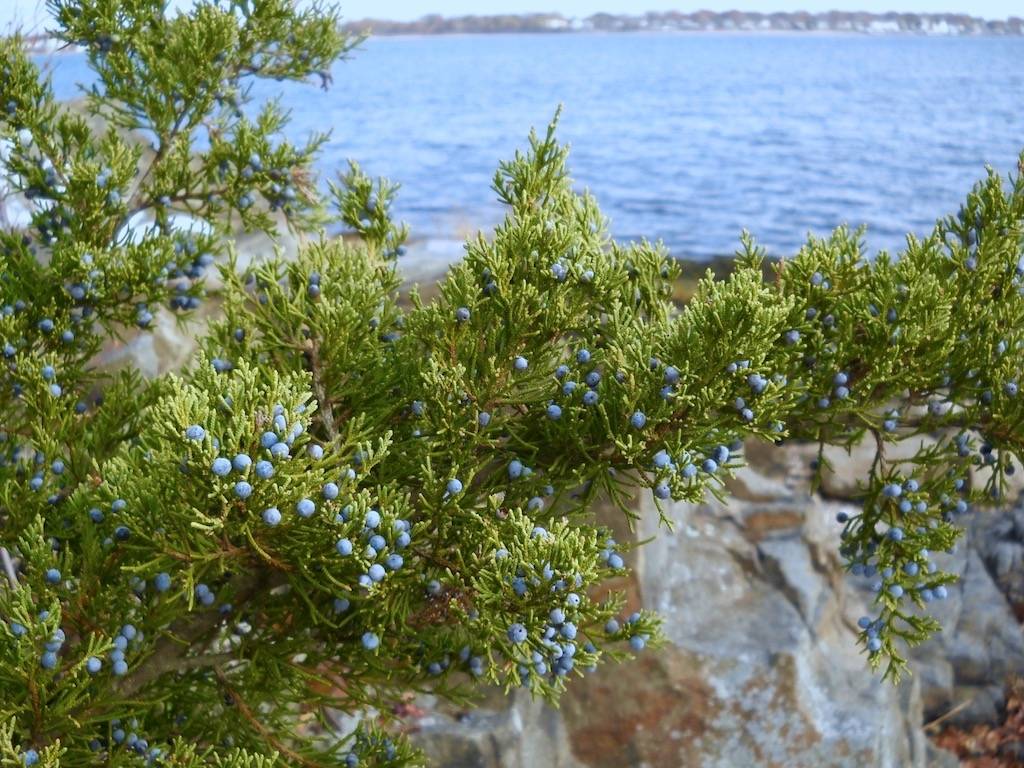eastern red cedar
The eastern red cedar is an evergreen conifer native to eastern North America. Considered a pioneer species, the eastern red cedar is able to establish in recently disturbed ground. However, unlike other pioneer species that may have a life span of only 40 years, it can potentially live for hundreds of years. The oldest reported tree is 940 years old, from West Virginia.
At Salter Grove, small and slight individuals can be found in shady understory along the Upland and Pond trails. A particularly tall individual grows on the way to the playground from the parking lot. Other large individuals with substantial foliage can be found along the sun-drenched Marsh and Rock Island Trails. The largest one of all grows in Audubon Field where it serves as a welcomed shelter for small birds throughout the year.
It is slow-growing and yields a dense wood. The reddish heartwood is used in lining closets or chests because its fragrance repels moths that damage clothing. The wood is also used for making fence posts because it is rot resistant. Historically, Native Americans used cedar posts to mark the boundaries of tribal hunting territories. French traders named Baton Rouge (red stick), Louisiana based on the red color of these posts.
Its waxy fruit is an important food for birds which aids in its dispersal. It has been noted that fruits consumed by Cedar Waxwings are three times as likely to germinate as fruits uneaten by birds.

